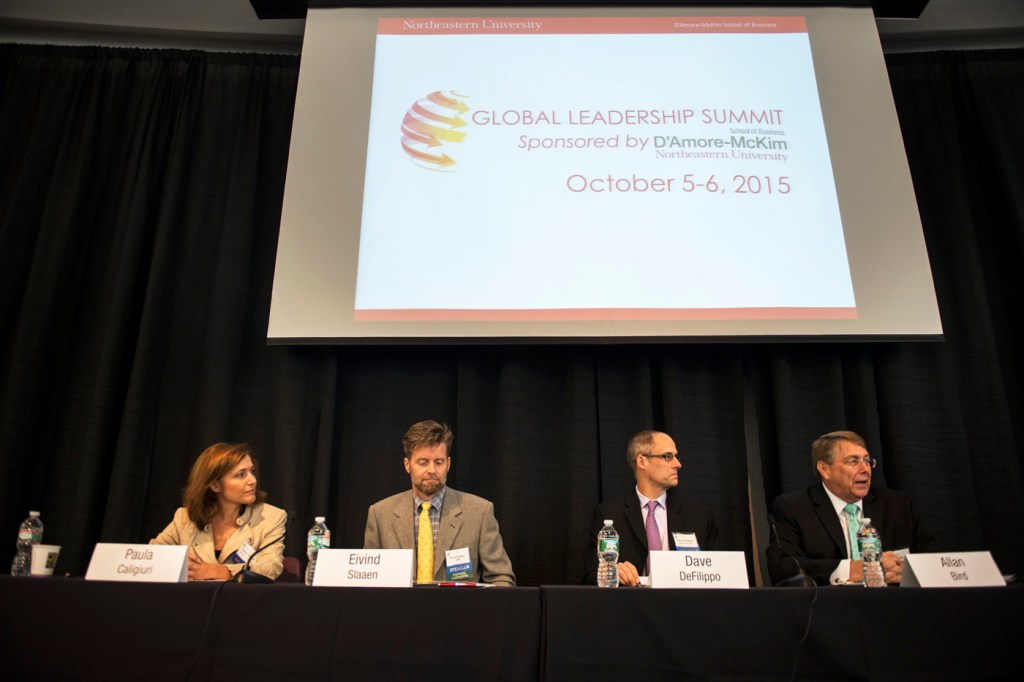Summit addresses challenges of leading in a global marketplace

As technological advances make global communication easier than ever, managers are increasingly faced with a critical challenge: how to be continuously present without being physically present to oversee teams based all over the world.
This challenge of virtual global leadership served as the focus of Northeastern University’s 2015 Global Leadership Summit, a two-day event that kicked off Monday afternoon. The annual event, organized by the D’Amore-McKim School of Business, brings industry leaders to campus to discuss current trends and themes within the business community.
A panel of business experts discussed the theme of leading when you can’t be there on day one in the Raytheon Amphitheater. Among them was Distinguished Professor of International Business and Strategy Paula Caligiuri, who focuses on global leadership development and cultural agility.
Caligiuri was joined by Dave DeFilippo, chief learning officer at Suffolk Construction, and Eivind Slaaen, head of people and culture development for Hilti Corporation. Allan Bird, the Darla and Frederick Brodsky Trustee Professor in Global Business, moderated the panel.
Here are five takeaways from the discussion:
• Understanding our new reality: When addressing the question of leading when you can’t be there, Caligiuri said she sees two specific challenges: investment in technologies and telemanagement. “We have a new reality with how we work with each other,” she said. “The type of people who work well in a virtual environment may be different than the people that we’ve hired. Maybe we’ll need new types of people for the pipeline”
• Creating deep developmental experiences: It takes more than simply breathing another country’s air to become culturally competent, Caligiuri said. Companies need to create deep developmental experiences, such as international volunteerism or short-term visits to another country.
• Developing trust within your team: Developing trust among team members is also crucial, said Slaaen, who offered some examples of how his company does that. One exercise his company uses is called a pit-stop letter, where employees have one hour to write a response to a letter from a “friend” who asks for advice on various subjects. The team then meets to discuss the responses.
• Communicating the organization’s message: The focus should be not only on the results but also on whether the team can carry the organization’s message, DeFilippo explained. “If they can carry the message then they can insure there is congruence and aligned integration, which will lead to more results.”
• Embracing cultural differences: Adhering to cultural differences among teams is also important for virtual leaders, DeFilippo noted, and leaders have to respect those differences. “I refer to this as translating,” he said. “How do we translate our message and strategy, be it from corporate to a region, or from regions back to us?”





